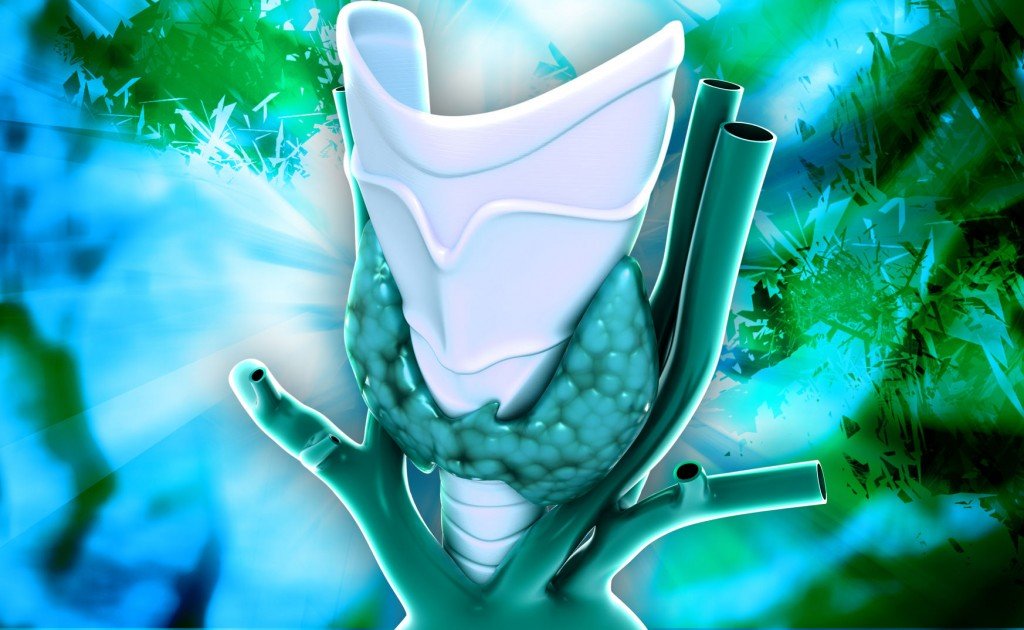Kelly Marie Fitzpatrick, BSN, MPS, ND
Two situations influenced my research into adipose tissue physiology and the mechanisms that contribute to obesity-related disease states. Since 2001, I have been working with overweight and obese clients, addressing weight loss and treating the disease consequences of hypertrophy and hyperplasia of the endocrine organ adipose tissue. In 2005, I was diagnosed with endometrial cancer and underwent a comprehensive treatment program. So when asked to speak to a group of bariatric patients in spring 2007, I felt strongly about addressing the endocrine association of adipose tissue and the potential risk of cancer as a result of increased body mass index (BMI).
The research into the mechanistic world of adipose tissue has taken off in a manner similar to the proliferation of adipose tissue in our society. The medical and pharmacologic worlds are hoping to find the golden solution for weight loss from a mechanistic and behavioral approach, which isn’t far off from how a nutraceutical practitioner might think. Bariatric surgery is the forerunner for the greatest percentage of weight loss in a given time, though there are certain complications and nutritional concerns to take into account.
As in many healing situations, applying naturopathic principles challenges most individuals to take responsibility for behaviors that have become emotionally and physically addictive. Socially, our approach to lifestyle, diet and recreation requires a wide-angle lens review and alteration to reverse the trends currently in place for an extremely expensive medical burden as a result of complications associated with being overweight and obese (see Figure 1).
Obesity
Obesity is being recognized as one of the greatest threats to human health. Thus, it is important to review current research regarding adipose tissue, appetite control and the physiological systems by which energy intake and energy expenditures are linked (Rosmond et al., 2006; Wynne et al., 2004). A biological evolutionary design protects us from starvation, but such a mechanism is not as critical or innately fine tuned for the restraint of food intake; thus the predisposition toward obesity (Rosmond et al., 2006; Lindstrom et al., 2005). Over the past decade, many advances have been made in the understanding of energy homeostasis, social and learned behaviors impacting meal patterns, and peripheral factors that play a role in controlling hunger and satiety (Rosmond et al., 2006; Wynne et al., 2004; see Table 1). If current trends continue, by the year 2020 1/3 of adults, 1/5 of boys and 1/3 of girls will be obese, with a BMI >30kg/m2 (Tomas et al., 2004; Dizdar and Alyamac, 2004; Kopelman, 2005).
Obesity leads to a state of inflammation, characterized by an abnormal production of cytokines, increased synthesis of acute-phase reactants and the activation of pro-inflammatory signaling pathways (Trujillo and Scherer, 2006). The increase in size and number of adipose cells correlate with an increased proliferation of inflammatory molecules, favoring a pro-inflammatory state. This pro-inflammatory state contributes to the obesity-related chronic diseases of cardiovascular pathology, carbohydrate intolerance and diabetes, lung disease, digestive complications, cancer, orthopedic diseases, reproductive system abnormalities, and psychological and psychiatric dysfunction (Ahima, 2006; see Figure 2).
Adipose Tissue
Histologically, two fundamentally different adipose tissue types, commonly called “fat,” are known to exist: white adipose tissue (WAT), discussed in this article, and brown adipose tissue (BAT), its primary function being nonshivering thermogenesis (Trujillo and Scherer, 2006). Adipose tissue, predominantly WAT, is a type of loose connective tissue distributed throughout the body in a variety of locations, comprised of lipid-filled cells surrounded by a matrix of collagen fibers, blood vessels, fibroblasts and immune cells (Trujillo and Scherer, 2006; Ahima, 2006; Bartness et al., 2005; Ahima and Flier, 2000). The predominant energy source available from WAT is stored triacylglycerol. The principle mechanism of access for this energy is through the sympathetic nervous system (SNS) innervation of WAT (Bartness et al., 2005). Adipose tissue is made up of adipocytes as well as stromal vascular cells, which account for a significant proportion of cells in the adipose tissue environment (Scherer, 2006). The extracellular matrix surrounding adipose tissue supports a variety of cells, such as monocytes and macrophages, and a reservoir of pluripotent stem cells (Trujillo and Scherer, 2006; Scherer, 2006).
The lipid droplet encompasses greater than 95% of the entire adipocyte (Trujillo and Scherer, 2006). This lipid droplet is the energy storage vessel for triglycerides (Ahima, 2006). The ability to increase in mass is unlimited, with the range in size of adipocytes being 25-200mm (Trujillo and Scherer, 2006). Adipose tissue growth involves both cellular hypertrophy and hyperplasia. Circulating factors, neuronal inputs and autocrine/paracrine factors secreted by cells within the adipose tissue influence the proliferation of adipocytes (Dizdar and Alyamac, 2004). Quantitatively, the most important secretory product of white adipocytes is fatty acids. The tissue also releases other lipid moieties, such as cholesterol, retinol, steroid hormones and prostaglandins (Dizdar and Alyamac, 2004; Bartness et al., 2005). Most of the processes involved in fatty acid metabolism have been shown to be controlled by hormones and neuropeptides (Bhathena, 2006; see Figure 3).
Neuroendocrine Functions of Adipose Tissue
The simplicity of adipose tissue is illusory (Trayhurn, 2005). Though the adipocyte appears to be reserved for the storage of triglycerides, its functions are complex and multifaceted. Extensive research reveals that the adipocyte has additional neuroendocrine roles and an elaborate secretory vocabulary that facilitates communication between other organs in our body, including the brain (Trujillo and Scherer, 2006; Bartness et al., 2005; Scherer, 2006; Prins, 2002).
Adipose tissue is somewhat “tissue-trophic” in its specific impact on neighboring organs (Trujillo and Scherer, 2006; Scherer, 2006). Each depot of adipose tissue could be considered as a “mini organ” serving functions unique to its location as well as functions universal to the tissue type (Trujillo and Scherer, 2006). Whereas visceral adipose tissue secretes endocrine hormones into the portal system and has direct access to the liver, subcutaneous adipose tissue hormones are secreted directly into systemic circulation (Bhathena, 2006). As would be expected, angiogenesis is important to sustain normal adipose tissue function and for the support of its metabolic and endocrine functions (Trujillo and Scherer, 2006).
As an endocrine organ, adipose tissue releases more than 20 substances into circulation (see Table 2). These adipose tissue-derived factors are referred to as adipokines (Rosmond et al., 2006; Trujillo and Scherer, 2006; Scherer, 2006; Prins, 2002; Trayhurn, 2005). The concept of describing the adipocyte as an endocrine cell did not gain acceptance until a number of adipocyte-secreted factors were identified as being highly enriched in the adipocyte. Adiponectin and leptin have been the most extensively studied of these factors (Tomas et al., 2004; Trujillo and Scherer, 2006). Adiponectin exhibits the most restricted expression pattern, with other adipose-derived hormones – such as leptin, adipsin, omentin, visfatin and resistin – having less adipocyte-specific expression and being produced by several other tissues as well (Scherer, 2006).
The knowledge of direct communication from the brain to the adipocytes is still under research, but adipose tissue expresses specific receptors for pituitary hormones and hypothalamic releasing factors. The term adipotropins describes pituitary and hypothalamic hormones or releasing factors that directly target adipocytes by their specific receptors (Schaffler et al., 2006). From the wide range of protein signals and factors already identified, WAT is recognized as a secretory organ of considerable complexity that is highly integrated into the overall schematic of physiology and metabolic control of mammals (Trayhurn, 2005; see Figure 4).
Adiponectin
Ironically, though adiponectin is most specific to adipose tissue, its levels are lowest with increased fat mass (Trujillo and Scherer, 2006; Scherer, 2006). Proinflammatory disease states, such as cardiovascular disease and diabetes, exhibit decreased levels of adiponectin. In fact, decreased adiponectin levels are observed to be a powerful predictor for the future development of Type II diabetes and cardiovascular disease (Trujillo and Scherer, 2006; Scherer, 2006). Increased adiponectin levels have beneficial therapeutic effects on inflammation, insulin sensitivity and lipid profiles (Trujillo and Scherer, 2006). Lipoprotein lipase (LPL) activity may contribute to the benefits of adiponectin on inflammation (Trujillo and Scherer, 2006).
Adiponectin circulates in three molecular forms in serum: a homotrimer; a low molecular-weight (LMW) hexamer; and a high molecular-weight (HMW) complex. Each size complex has important biological implications. Only the HMW form has bioactivity (Trujillo and Scherer, 2006). Disease states are benefited by the presence of adiponectin. As a starvation signal, HMW adiponectin may facilitate the sequestering of lipid molecules into adipocytes and away from visceral tissues, such as the liver and muscle. Decreased lipid levels in muscle and particularly in the liver cause improvements in insulin sensitivity (Scherer, 2006; Prins, 2002). The repartitioning of triglycerides toward adipocytes and lipogenesis results in the improvement of metabolic complications in nonadipose tissues (Trujillo and Scherer, 2006; Ahima and Flier, 2000; Scherer, 2006). In other words, conserving fat distributions to adipocytes contributes to less visceral obesity and less visceral inflammation.
Adiponectin levels are higher in women than men, but in contrast to leptin, adiponectin is reduced in obesity and increases in response to severe weight loss (Trujillo and Scherer, 2006; Ahima and Flier, 2000; Scherer, 2006). Estrogen plays a key role in visceral fat depot distribution, lipolysis and levels of circulating HMW adiponectin (Trujillo and Scherer, 2006; Ahima and Flier, 2000). Testosterone selectively reduces the release of the HMW form of adiponectin (Trujillo and Scherer, 2006). Disease states contribute to the expression of adiponectin, which has anti-angiogenic effects and appears to decrease cell proliferation (Kaaks et al., 2002). Low levels of circulating adiponectin have been noted in patients with various types of cancer, including gastric, endometrial, prostate and breast (Kaaks et al., 2002). In Crohn’s disease, leptin and adiponectin are highly expressed in the mesenteric fat tissue, indicating that both pro- and anti-inflammatory adipokines are over-expressed in this type of inflammation (Kaaks et al., 2002; see Figure 5).
Leptin
Leptin is highly expressed but not uniquely expressed in adipose tissue. It circulates as the free and bound hormone and reaches its targets in the brain via saturable process (Kopelman, 2005). The gastric epithelium, intestine, placenta, skeletal muscle, mammary epithelium and brain produce low levels of leptin (Ahima, 2006); levels are closely related to hyperplasia and hypertrophy of adipose tissue, such that leptin increases in obesity and decreases during fasting (Ahima, 2006). Leptin has significant influence on thyroid, growth and reproductive hormones, stimulation of appetite and sympathetic nerve activity (Ahima and Flier, 2000). Obesity is associated with leptin production and high plasma leptin concentration (Ahima and Flier, 2000). The SNS outflow from the brain to WAT inversely influences the secretion of leptin (Bartness et al., 2005; see Figure 6). Leptin acts to depress food intake and increase peripheral energy expenditure and the prevention of lipid deposition in peripheral tissue other than adipocytes (Kopelman, 2005). “Leptin resistance” is speculated to be the result of several mechanisms: 1) resistance associated with a situation that leptin does not influence, such as one’s environment; 2) a deficiency in the response to leptin that is genetic or a result of life experience, i.e., fetal development; and 3) elevated levels of leptin, which create a resistance to uptake of the hormone (Arch, 2005).
The neurological understanding of leptin and its transport across the blood brain barrier (BBB) has been extensively studied since the 1980s. Leptin’s role in energy balance includes inhibition of appetite, stimulation of thermogenesis, enhanced fatty acid oxidation, decreased glucose, and reduced body weight and fat (Ahima and Flier, 2000). Leptin acts as a signal for the switch between fed and fasted states (Ahima, 2006). There is a potential mechanism for leptin resistance in obese patients thought to be associated with a rate-limiting transport step for the entry of leptin into the brain, or impaired receptor signaling (Kopelman, 2005). Though widely transported throughout the CNS, the most intensive region of uptake of leptin is at the arcuate nucleus (see Figure 7). Leptin depends on saturable transport across the BBB to reach the arcuate nucleus (Banks, 2006). The transport of leptin across the BBB is influenced by obesity and starvation, where levels are decreased; but they are increased with short-term fasting (Banks, 2006). It may be that triglyceride-induced inhibition of leptin transport evolved because hypertriglyceridemia (due to lipid oxidation in fasting/starvation) is a signal to the brain of starvation and not a signal of obesity (inflammatory visceral obesity with nonadipose triglyceride sequestering) (Banks, 2006).
Cancer and Adipose Tissue
The relative risk of developing cancer is directly proportional to both anthropometric indices of adipocity and body fat distribution. Studies show an association between post-menopausal breast-cancer risk and BMI in women who have never used hormone replacement therapy (HRT). This correlates with the understanding of paracrine stimulation in breast tissue by endogenous hormones created by aromatase activity in fatty tissue. The increase in cancer risk associated with excess body weight or increases in abdominal fat may be mediated by alterations in the metabolism of sex steroids (androgens, estrogens and progesterone), insulin and insulin-like growth factor-1 (IGF-1). These steroids have been shown to regulate cellular differentiation, proliferations and apoptosis, and may potentiate the selective growth of preneoplastic and neoplastic cells. Increased insulin concentrations reduce sex hormone binding globulin, thus increasing circulating unbound sex steroids available for bioactivity. Adipose tissue is a major site for the synthesis of estrogens from androgenic precursors (Bianchini et al., 2002; Kaaks et al., 2002).
A comprehensive understanding of current research looking at the mechanisms behind energy homeostasis is necessary when applying the biochemistry to treatment interventions (Colmers, 2006; Foster-Schubert and Cummings, 2006; Richard and Boisvert, 2006). Current research focuses on unraveling the biochemical mechanisms, such as fatty acid synthesis/degradation, lipoprotein lipase transport and sympathetic nervous system innervation, to pharmacologically target obesity therapeutics (Bartness et al., 2005; Trayhurn, 2005; Ronnett et al., 2006; Ronnett et al., 2005). Fatty acid synthesis and degradation is an area where nutraceuticals can also be applied, i.e., L-carnitine, vitamin C, choline, chromium, rhodiola, yohimbine, etc. (Johnston et al., 2006; Med Lett Drugs Ther, 2004; Foster, 2004), but according to the Harvard Medical School, “no weight-loss supplements meet criteria for recommended use” (Foster, 2004). Active pathways of fatty acid synthesis and oxidation have been firmly established, and the application of this understanding has considerable clinical promise for the treatment of obesity, Type II diabetes, steatohepatitis and lipotoxic damage to the heart (Med Lett Drugs Ther, 2004). By biochemically enhancing lipid oxidation and the mobilization of triglycerides to subcutaneous storage vessels, the inflammatory mechanisms related to visceral adipose tissue proliferation will be reduced and, consequently, also will bring a reduction in obesity-related inflammatory diseases.
There is also the application of nature cure philosophy regarding weight loss. As adipose tissue is reduced of its primary contents, as lipid oxidation is enhanced through exercise, diet, supplementation and botanical formulas, the physician must work with the patient to enhance and open the organs of elimination. The best way to achieve a healthy body weight is to balance energy intake with energy expenditure (Kaaks et al., 2002). Dietary recommendations with caloric restriction and portion size reduction; reduced-fat and calorie-dense foods; elimination of refined flour and sugar products; increased whole grains, fruits and vegetables; increased organic and wild foods; appropriate intake of water, fresh air and sleep; positive reinforcement for energy expenditure vs. energy conservation; and self-monitoring and dietary journal; these are important aspects of a patient’s treatment program (Kaaks et al., 2002; Costain and Croker, 2005; Maryon-Davis, 2005).
Successful weight-loss programs and clinical interventions require a comprehensive integrated medical approach. The current team being established in conventional facilities includes bariatric surgeons, a psychologist, Western-trained nutritionist and surgical support technicians. Including an ND in this model would create the integrated framework necessary to meet the general public’s needs for holistic care, expert nutritional interventions and comprehensive evaluations, which result in individualized treatment plans and goal setting necessary for weight loss success. Governmental and non-governmental organizations, the food industry, media, worksites, schools, health professionals and educators all have a responsibility to work together to produce an environment less conducive to weight gain. A supportive community environment facilitates a healthy lifestyle for those of all ages (Kaaks et al., 2002).
 Kelly Marie Fitzpatrick, ND, BSN, MPS is a graduate of Bastyr University. She has been a clinical practitioner for more than 20 years. With 80%-90% of her client base being obese, she is proactive in working with them to reduce their weight and the inflammatory mechanisms that influence their well-being and contribute to the potential cancerous and chronic disease risks. She practices in Eugene and Portland, Ore.
Kelly Marie Fitzpatrick, ND, BSN, MPS is a graduate of Bastyr University. She has been a clinical practitioner for more than 20 years. With 80%-90% of her client base being obese, she is proactive in working with them to reduce their weight and the inflammatory mechanisms that influence their well-being and contribute to the potential cancerous and chronic disease risks. She practices in Eugene and Portland, Ore.
References
Ahima RS: Adipose tissue as an endocrine organ, Obesity 14(Supplement 5):242S-249S, 2006.
Ahima RS, Flier JS: Adipose tissue as an endocrine organ, Trends Endocrinol Metab 11(8):327-332, 2000.
Arch JR: Central regulation of energy balance: inputs, outputs and leptin resistance, Proc Nutr Soc 64(1):39-46, 2005.
Banks WA: Blood-brain barrier and energy balance, Obesity 14S:234S-237S, 2006.
Bartness, TJ, Song CK: Brain-adipose tissue neural crosstalk, Physiol Behav 91(4):343-51, 2007.
Bartness TJ et al: Brain-adipose tissue cross talk, Proc Nutr Soc 64:53-64, 2005.
Berthoud HR: Homeostatic and non-homeostatic pathways involved in the control of food intake and energy balance, Obesity 14S:197S-200S, 2006.
Bhathena SJ: Relationship between fatty acids and the endocrine and neuroendocrine system, Nutritional Neuroscience, 9(1-2):1-10, 2006.
Bianchini F et al: Overweight, obesity, and cancer risk, The Lancet Oncology 3(9):565-574, 2002.
Bray GA: Medical consequences of obesity, J Clin Endocrinol Metab 89(6):2583-2589, 2004.
Colmers W: What makes people fat? View from the chair, Obesity 14S:190S-191S, 2006.
Costain L, Croker H: Helping individuals to help themselves, Proc Nutr Soc 64:89-96, 2005.
Dizdar O, Alyamac E: Obesity: an endocrine tumor?, Medical Hypotheses 63:790-792, 2004.
Foster DW: The role of the carnitine system in human metabolism, Ann NY Acad Sci Nov; 1033:1-16, 2004.
Foster-Schubert KE, Cummings DE: Emerging therapeutic strategies for obesity, Endocrine Reviews 27(7):779-793, 2006.
Jazet IM et al: Adipose tissue as an endocrine organ: impact on insulin resistance, Neth J Med 61(6):194-212, 2003.
Johnston CS et al: Marginal vitamin C status is associated with reduced fat oxidation during submaximal exercise in young adults, Nutr Metab Aug 31(3):35, 2006.
Kaaks R et al: Obesity, endogenous hormones, and endometrial cancer risk: a synthetic review, Cancer Epidemiology, Biomarkers & Prevention 11:1531-1543, 2002.
Kopelman PG: Clinical treatment of obesity: are drugs and surgery the answer?, Proc Nutr Soc 64:65-71, 2005.
Lindstrom J et al: Lifestyle strategies for weight control: experience from the Finnish Diabetes Prevention Study, Proc Nutr Soc 64:81-88, 2005.
Maryon-Davis A: Weight management in primary care: how can it be made more effective?, Proc Nutr Soc 64:97-103, 2005.
Mastorakos G, Zapanti E: The hypothalamic-pituitary-adrenal axis in the neuroendocrine regulation of food intake and obesity: the role of corticotropin releasing hormone, Nutritional Neuroscience 7(5-6):271-280, 2004.
Prins JB: Adipose tissue as an endocrine organ, Best Practice & Research Clinical Endocrinology and Metabolism 16(4):639-651, 2002.
Richard D, Boisvert P: The neurobiology of obesity, Obesity 14:187S-188S, 2006.
Ronnett GV et al: Fatty acid metabolism, the central nervous system, and feeding, Obesity Aug;14(Suppl 5): 201S-207S, 2006.
Ronnett GV et al: Fatty acid metabolism as a target for obesity treatment, Physiol Behav May 19; 85(1):25-35, 2005.
Rosmond R et al: A brief update of glucocorticoid receptor variants and obesity risk, Ann NY Acad Sci 1083:153-164, 2006.
Saper RB et al: Common dietary supplements for weight loss, Am Fam Physician Nov; 70(9):1731-1738, 2004.
Schaffler A et al: The role of ‘adipotropins’ and the clinical importance of a potential hypothalamic-pituitary-adipose axis, Nature Clinical Practice Endocrinology and Metabolism 2(7):374-383, 2006.
Schaffler A et al: Brain talks with fat – evidence for a hypothalamic-pituitary-adipose axis?, Neuropeptides 39(4):363-367, 2005.
Scherer PE: Adipose tissue: from lipid storage compartment to endocrine organ, Diabetes 55:1537-1545, 2006.
Tilg H, Moschen AR: Adipocytokines: mediators linking adipose tissue, inflammation and immunity, Nature Reviews Immunology 6(10):772-783, 2006.
Tomas E et al: Metabolic and hormonal interactions between muscle and adipose tissue, Proc Nutr Soc 63:381-385, 2004.
Trayhurn P: Endocrine and signaling role of adipose tissue: new perspectives on fat, Acta Physiol Scand 184:285-293, 2005.
Trayhurn P: The biology of obesity, Proc Nutr Soc 64:31-38, 2005.
Trujillo ME, Scherer PE: Adipose tissue-derived factors: Impact on health and disease, Endocr Rev 27(7):762-778, 2006.
Wynne K et al: The gut and regulation of body weight, J Clin Endocrinol Metab 89(6):2576-2582, 2004.
No Authors listed: L-carnitine, Med Lett Drugs Ther Nov 22; 46(1196):95-96, 2004.





